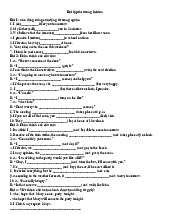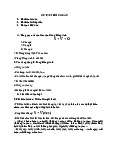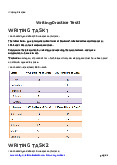

Preview text:
ELT METHOD 1 TEACHING VOCABULARY I.
VOCABULARY: WHAT NEEDS TO BE TAUGHT?
Match the definitions with their corresponding terms. Then select the examples with their definitions. Term Definition Example E.g. Denotation
The meaning of a word is primarily what it j refers to in the real world. Connotation Formality Derivation Inflection Pronunciation Spelling Synonyms Antonyms Hyponyms Co-hyponyms Super-ordinates Collocation Compound words DEFINITIONS: 1.
Items that serve as specific examples of a general concept. 2.
General concepts that “cover” specific items. 3.
A new word made by combining two others. 4.
A particular item is the appropriate one to use in a certain context or not. 5.
The associations, or positive or negative feelings it evokes, which may or
may not be indicated in a dictionary definition. 6.
The process of creating new words using prefixes and suffixes 7.
Words which go together, often verbs and nouns like “come to a decision”. 8. What a word sounds like. 9.
The creation of new forms of a word (e.g. plurals, participles, etc.) 10.
Other items that are the same kind of thing. 11. What a word looks like. 12.
Items that mean the same, or nearly the same. 13. Items that mean the opposite. EXAMPLES: a. Red, blue, green, brown b. Sinkable – unsinkable c. Come to the end d. Vegetables carrot, tomato e. Dog, lion, mouse animals f. Rich – poor g. Bright, clever = intelligent h. Hi, hello – good morning i. Dog: friendship, loyalty j. Dog: a kind of animals k. Leaf – leaves l. Education educational m. Car – c-a-r n. Elephant /'elifənt/ o. Think thought p. Underwater




